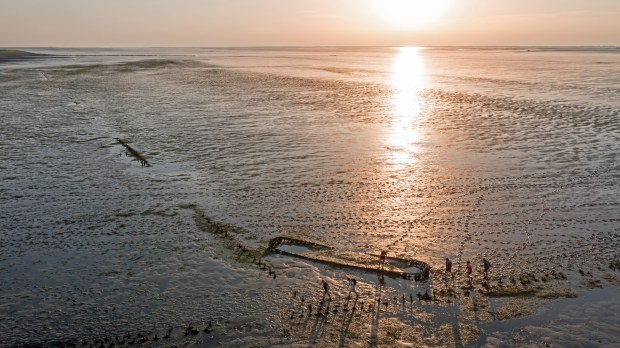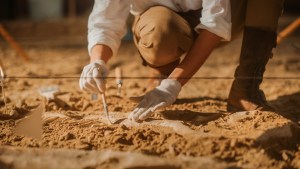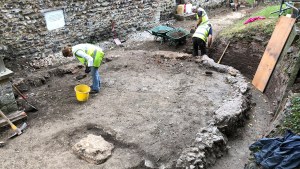A joint scientific project has located the sunken church of Rungholt in the Wadden Sea in Germany. It is believed that the whole town, church included, was drowned in a storm surge in the mid-14th century.
The word wad, from which the Wadden Sea derives its name, is Frisian and Dutch for “mud flat.” The area consists of extensive tidal mud flats, deeper tidal trenches, and islands, continually contested by land and sea. In fact, the landscape was mainly formed by storm tides from the 10th to 14th centuries, overflowing and carrying away former peat land behind the coastal dunes – and even entire towns, as in the case of Rungholt.
As read in the note published by Medievalists.net, “Rungholt was an important port in the Middle Ages, with a population of up to 3,000 people. However, it was one of several places destroyed on the night of 15-16 January 1362, during St. Marcellus’ flood.
St. Marcellus’ flood (also known as the Grote Mandrenke, the “Great Drowning of Men”) was a devastating storm that struck parts of Great Britain, the Netherlands, Germany and Denmark, killing at least 25,000 people and drastically altering the coastline in the region.
For over a hundred years, researchers have been searching for Rungholt. Medievalists.net explains how, using a combination of geoscientific and archaeological methods, “researchers from Kiel University (CAU), Johannes Gutenberg University Mainz (JGU), the Center for Baltic and Scandinavian Archaeology (ZBSA), and the State Archaeology Department Schleswig-Holstein (ALSH), both in Schleswig, have now succeeded in locating the site of its church.”
The key to the success of the work was a close interdisciplinary collaboration.
“Settlement remains hidden under the mudflats are first localized and mapped over a wide area using various geophysical methods such as magnetic gradiometry, electromagnetic induction, and seismics,” explained Dr. Dennis Wilken, a geophysicist at Kiel University.



